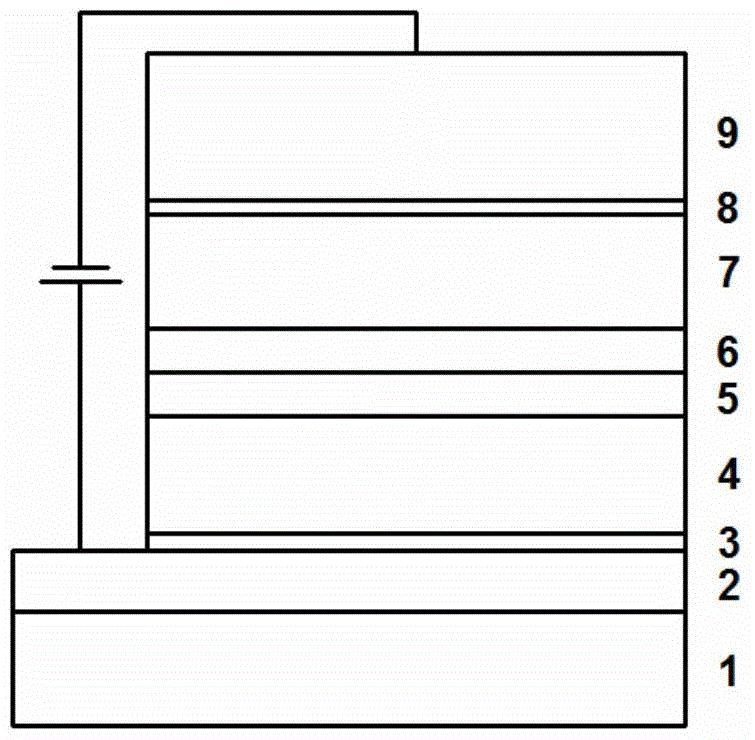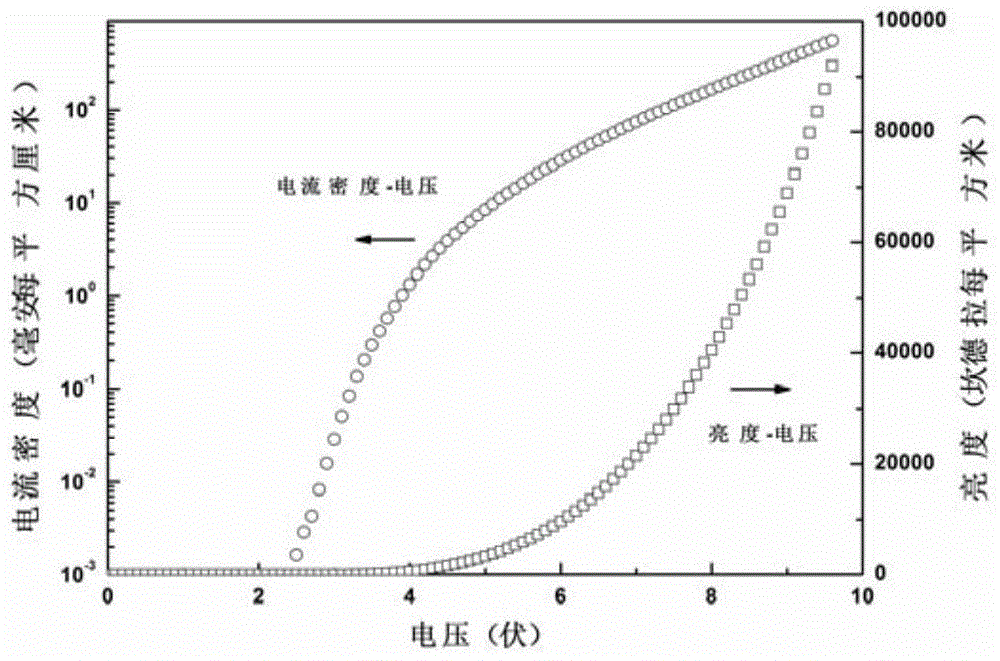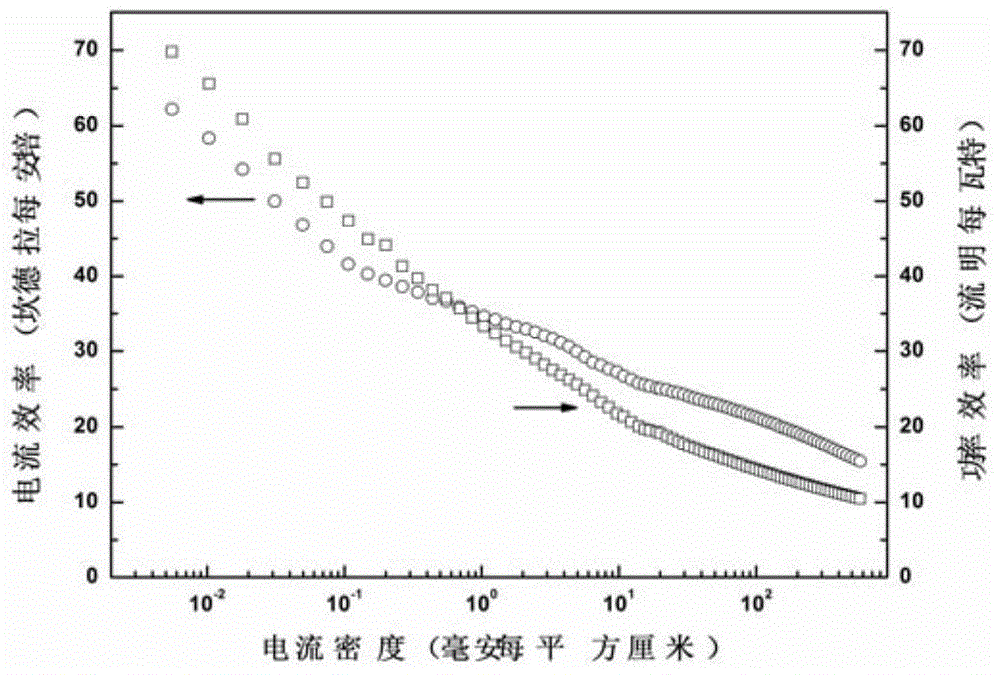A kind of red organic electroluminescence device and preparation method thereof
A luminescent and red technology, applied in the field of red organic electroluminescent devices and their preparation, can solve the problems of high operating voltage of devices, and achieve the effects of low dependence, high color purity and high spectral stability
- Summary
- Abstract
- Description
- Claims
- Application Information
AI Technical Summary
Problems solved by technology
Method used
Image
Examples
preparation example Construction
[0072] The present invention also provides a method for preparing a red organic light-emitting device described in the above technical solution, comprising the following steps:
[0073] providing an anode layer on the substrate;
[0074] On the surface of the anode layer, an anode modification layer, a hole transport-electron blocking layer, a hole-dominated light-emitting layer, an electron-dominated light-emitting layer, a hole block-electron transport layer, a cathode modification layer and a cathode layer are sequentially evaporated to obtain a red organic Light emitting devices.
[0075] The invention provides a substrate on which an anode layer is arranged. In the present invention, the substrate is consistent with the substrate described in the above technical solution, and will not be repeated here. In the present invention, the anode material provided on the substrate is preferably etched to form a strip electrode on the substrate, and an anode layer is obtained on ...
Embodiment 1
[0093] First, the ITO anode layer on the ITO glass is laser-etched into a strip electrode, and then ultrasonically cleaned with cleaning solution and deionized water for 15 minutes and dried in an oven; then the dried substrate is placed in a pre-treatment vacuum Chamber, under the atmosphere with a vacuum degree of 10Pa, the ITO anode is subjected to low-pressure plasma treatment with a voltage of 400 volts for 3 minutes, and then transferred to the organic evaporation chamber;
[0094] In a vacuum of 1×10 -5 Pa~2×10 -5 In the organic evaporation chamber of Pa, 3nm thick MoO was sequentially evaporated on the ITO layer at a rate of 0.01nm / s 3 Anode modification layer 3; TAPC hole transport-electron blocking layer 4 with a thickness of 40nm is evaporated at a rate of 0.05nm / s; PQ is evaporated at a rate of 0.002nm / s 2 Ir (dpm) and TcTa were evaporated at a rate of 0.05nm / s to obtain a 10nm thick hole-dominated light-emitting layer 5; FK306 was evaporated at a rate of 0.0001n...
Embodiment 2
[0102] First, the ITO anode layer on the ITO glass is laser-etched into strip electrodes, and then ultrasonically cleaned with cleaning solution and deionized water for 15 minutes and dried in an oven. Then put the dried substrate into the pretreatment vacuum chamber, and then transfer the ITO anode to the organic evaporation chamber after a 3-minute low-pressure plasma treatment with a voltage of 400 volts in an atmosphere with a vacuum degree of 10 Pa;
[0103] In a vacuum of 1×10 -5 Pa~2×10 -5 In the organic evaporation chamber of Pa, 3nm thick MoO was sequentially evaporated on the ITO layer at a rate of 0.01nm / s 3 Anode modification layer 3; TAPC hole transport-electron blocking layer 4 with a thickness of 40nm is evaporated at a rate of 0.05nm / s; PQ is evaporated at a rate of 0.002nm / s 2 Ir (dpm) and mCP were evaporated at a rate of 0.05nm / s to obtain a hole-dominated light-emitting layer 5 with a thickness of 10nm; FK306 was evaporated at a rate of 0.0001nm / s, and PQ ...
PUM
 Login to View More
Login to View More Abstract
Description
Claims
Application Information
 Login to View More
Login to View More - R&D
- Intellectual Property
- Life Sciences
- Materials
- Tech Scout
- Unparalleled Data Quality
- Higher Quality Content
- 60% Fewer Hallucinations
Browse by: Latest US Patents, China's latest patents, Technical Efficacy Thesaurus, Application Domain, Technology Topic, Popular Technical Reports.
© 2025 PatSnap. All rights reserved.Legal|Privacy policy|Modern Slavery Act Transparency Statement|Sitemap|About US| Contact US: help@patsnap.com



